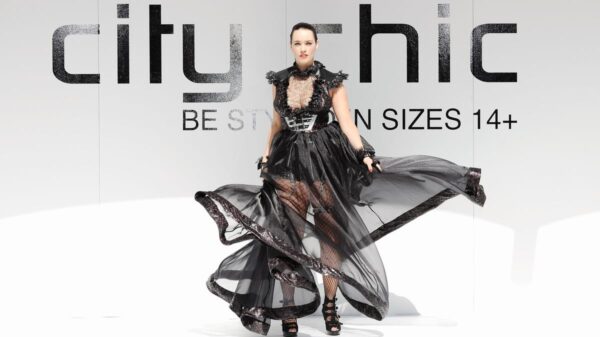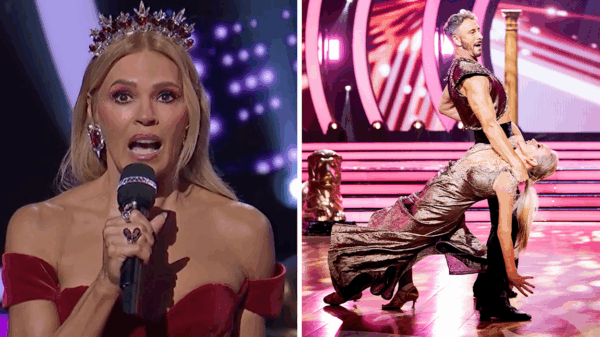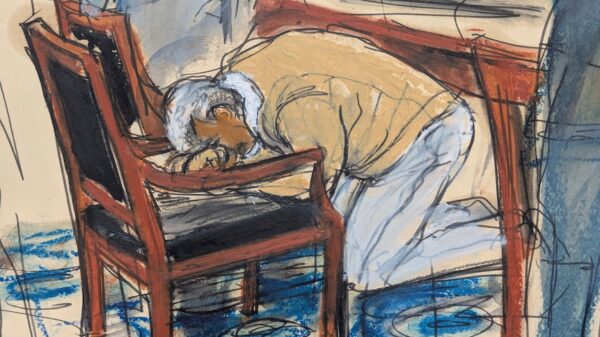The winter season of 2024-25 has witnessed a surprising resurgence of fur clothing, both real and faux, in the fashion scenes of Europe and North America. Prominent trends include shearling jackets and embroidered “Penny Lane coats,” which have captured the attention of designers and consumers alike. This revival has sparked considerable debate, particularly in light of the ongoing influence of the anti-fur movement, which gained momentum in the 1980s and continues to shape public perception.
Historically, fur has long been associated with wealth, luxury, and status. However, the 2010s marked a significant shift, as cities like New York and Los Angeles implemented bans on the sale of fur. The United Kingdom has also prohibited the farming of fur-bearing animals and, alongside the European Union, committed to legislation against fur imports. In a recent local debate in Worthing, England, the appropriateness of ceremonial robes featuring fur trim was discussed, highlighting the contentious nature of fur in contemporary fashion.
Despite this backdrop, many young people are embracing the trend of wearing real fur. The fashion industry has seen a revival of styles reminiscent of the counter-cultural movements of the 1960s, which included apparel made from animal skins. Critics argue that the return of fur reflects a broader cultural shift, with some interpreting it as a manifestation of right-wing politics.
Understanding the Boom Boom Trend
The current fashion wave, dubbed the “boom boom” trend, emphasizes excess and traditional male-coded values. Fashion journalists have characterized this resurgence as “over-the-top and unashamed about its own greed and lack of wokeness.” The debates surrounding fur clothing encapsulate moral tensions between need and desire, as well as luxury and excess.
For much of the 20th century, fur coats were synonymous with femininity and class. However, by the 1980s, fur advertising often portrayed women wearing fur as either cruel or uninformed, leading to a decline in its popularity. Protests against fur began proliferating in the United States during the 1990s, further complicating its public image. Today, the renewed interest in fur has revived these longstanding debates. Some young consumers opt for faux fur to avoid animal cruelty, while others argue that synthetic alternatives are more environmentally harmful, citing vintage fur as a sustainable choice. This preference for vintage fur has drawn criticism, as opponents contend it normalizes the killing of animals for fashion.
The boom boom trend has been likened to a modern interpretation of 1980s conspicuous consumerism. In an era marked by economic challenges, the choice to adopt fur may signify a desire for identity that transcends financial limitations.
The Global History of Fur
The conversation around fur is not limited to Western perspectives. The decline of fur-bearing animal populations in North America and Siberia in the early 19th century led to the expansion of fur farming globally. For instance, Central Asia began supplying furs to Europe and North America from the 1850s onwards. Local artisans cured the pelts of karakul lambs, yielding a rich and glossy fur that became popular in Western fashion.
Post-Russian Revolution in 1917 saw many pastoralists from Central Asia migrate to Afghanistan, where the karakul fur trade flourished, significantly contributing to the country’s foreign currency reserves. By the 1960s, Afghan sheepskin coats, known as “Afghans,” gained favor in the West, worn by notable figures like Brian Jones of the Rolling Stones. The iconic Afghan coat also experienced a resurgence in the early 2000s, particularly following its appearance in the film “Almost Famous.”
The anti-fur movement of the 1980s significantly impacted the market for karakul, particularly as rumors circulated regarding the treatment of lambs used for fur production. Accounts of unethical practices were not limited to Western opposition; Afghan families also expressed concern over the treatment of animals in the industry.
The civil war in the 1990s devastated the infrastructure of the karakul industry in Afghanistan, limiting the availability of pelts to auction houses in cities such as Frankfurt, Copenhagen, and Helsinki. Although international development organizations sought to revitalize the trade in the 2000s, sales never returned to pre-war levels. Consequently, many Afghan families have resorted to sending their sons to work illegally in Turkey as shepherds for commercially focused farmers.
While promotional material from fashion houses occasionally references the history of the Penny Lane coat and its ties to Afghanistan, broader media discussions surrounding fur fashion often overlook its rich historical connections to Central Asia.
This complex interplay of cultural heritage, economic realities, and moral considerations continues to shape the ongoing discourse surrounding fur in the fashion industry. The resurgence of fur clothing not only revives past trends but also reignites historical debates that reflect the values and conflicts of contemporary society.


























































